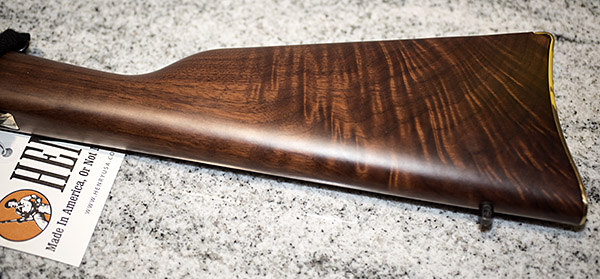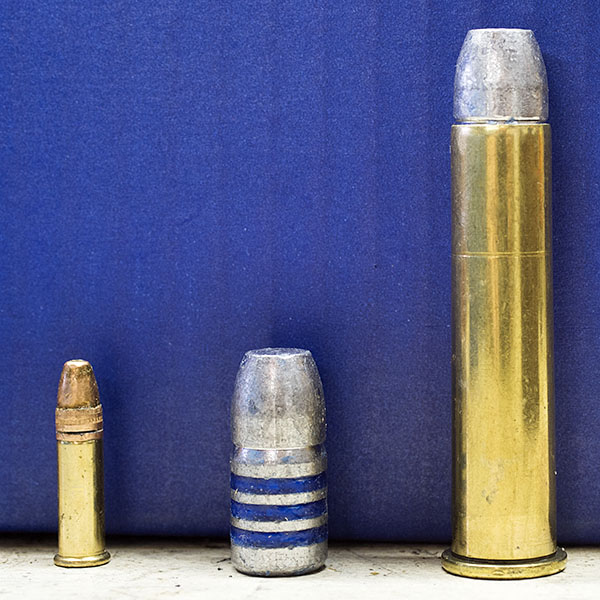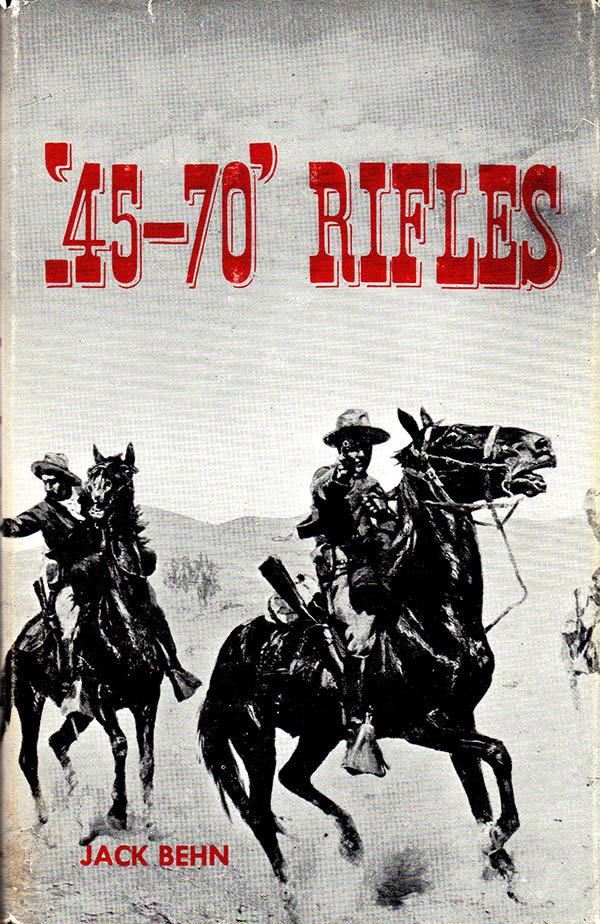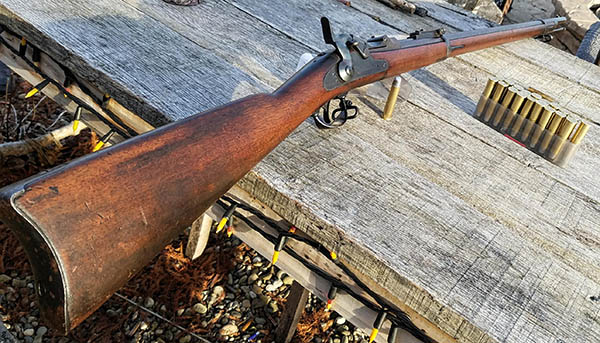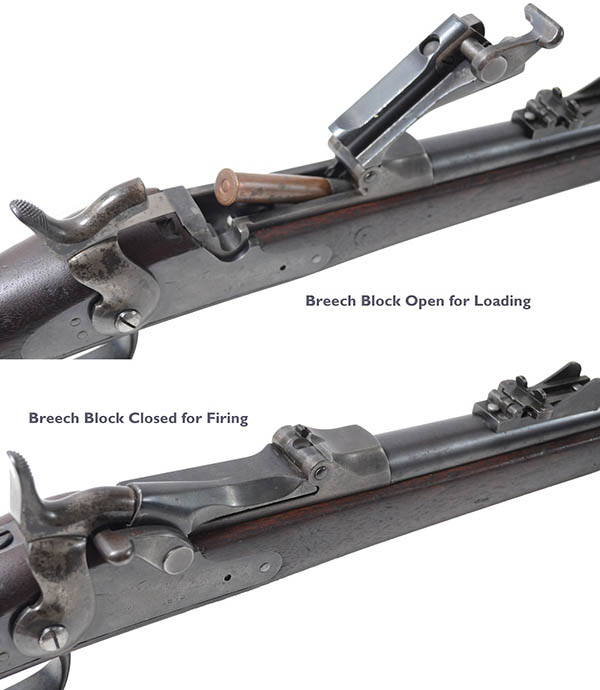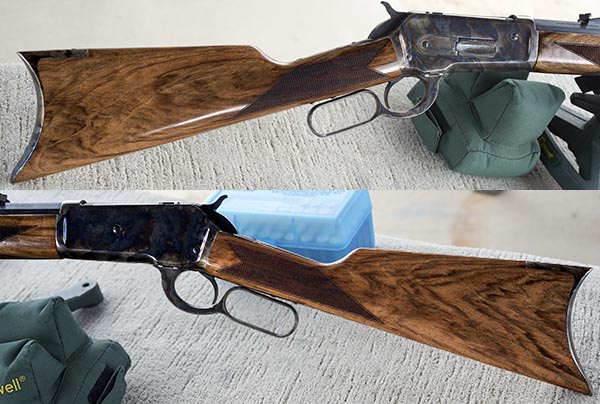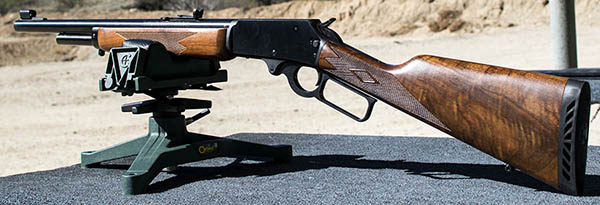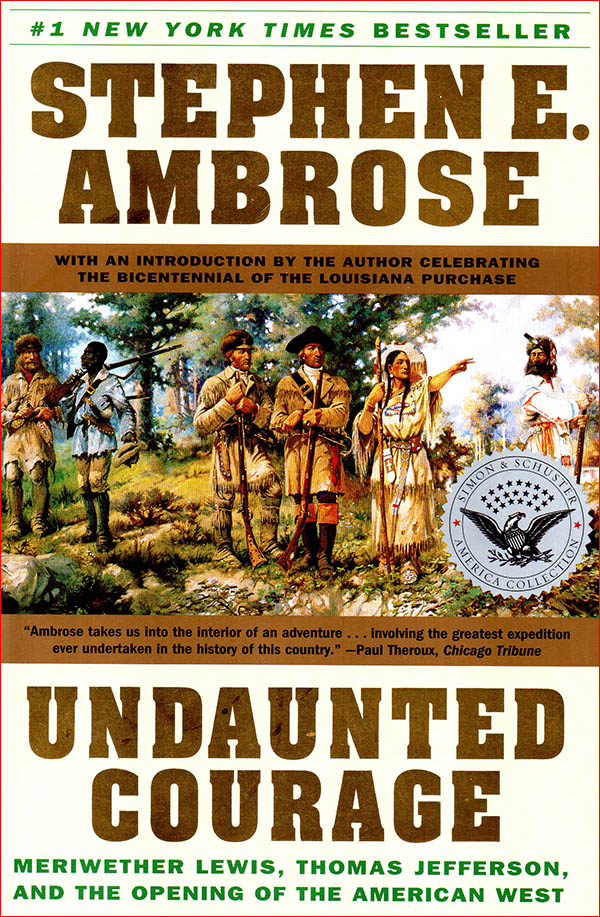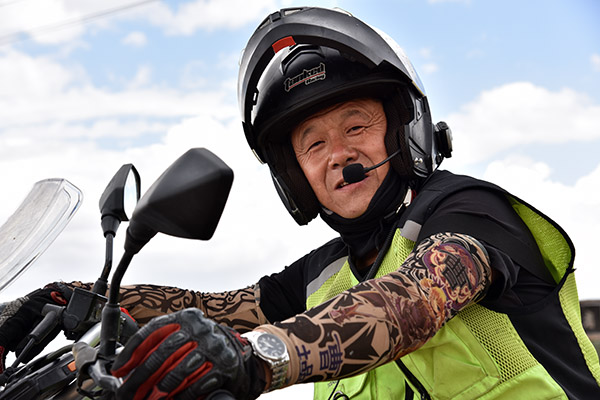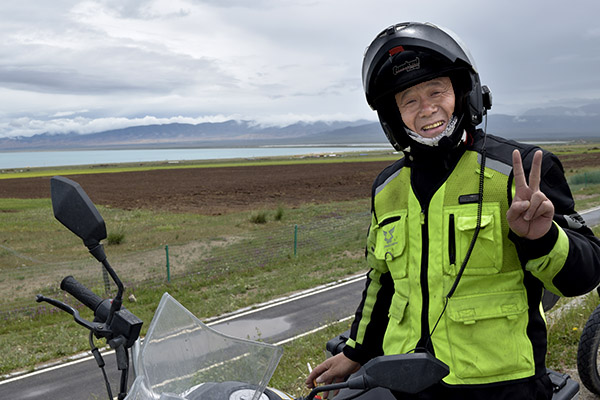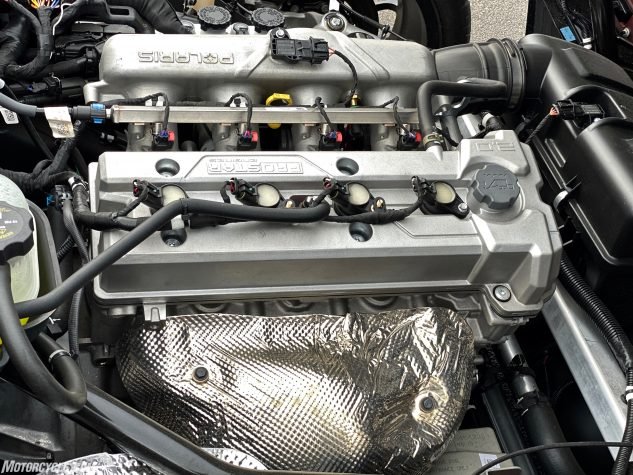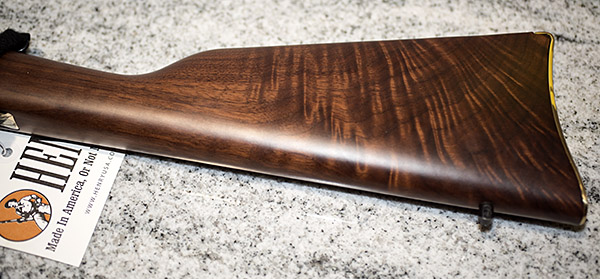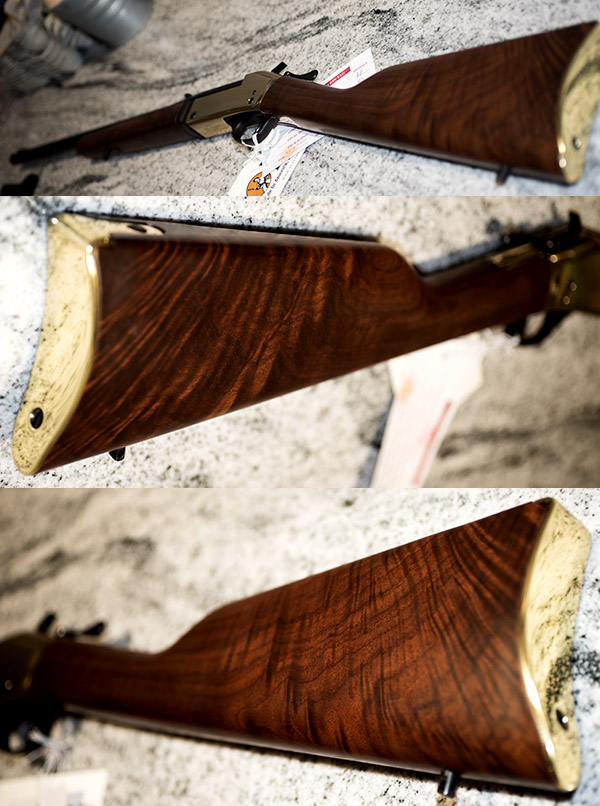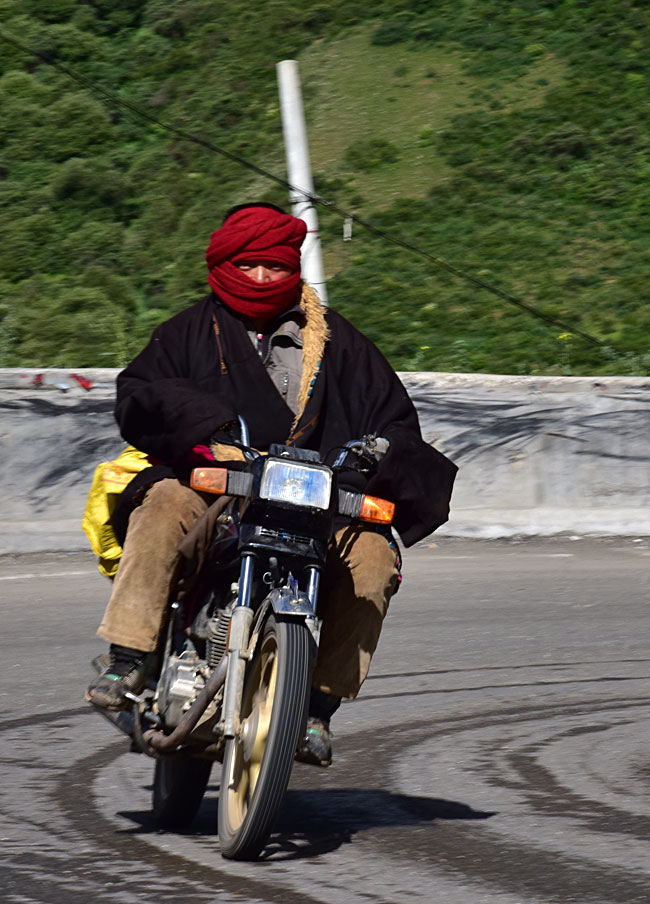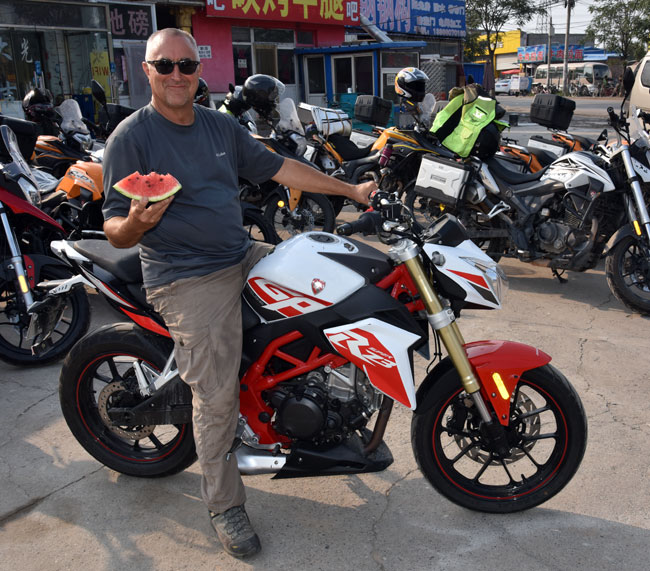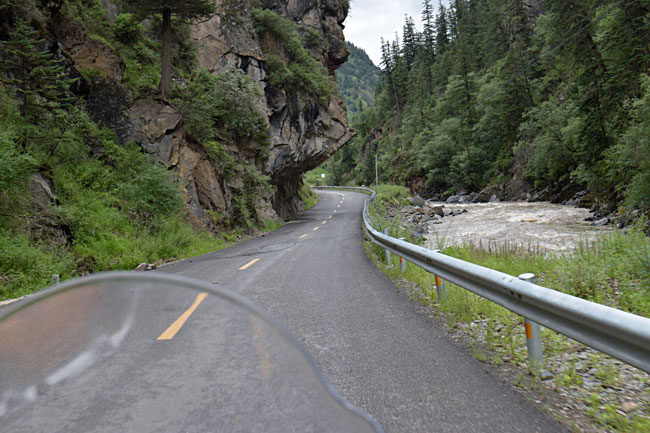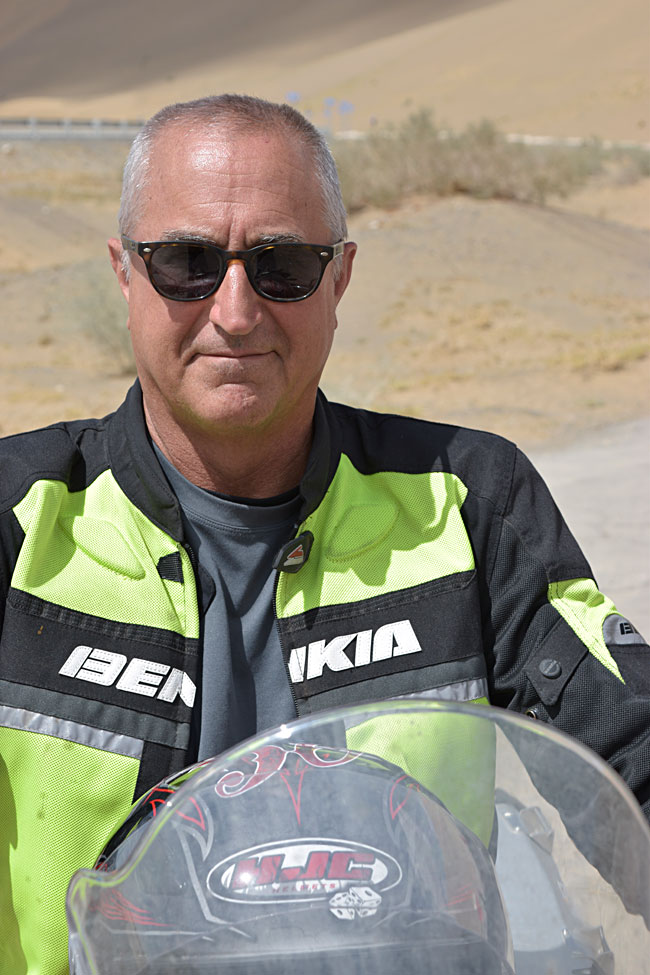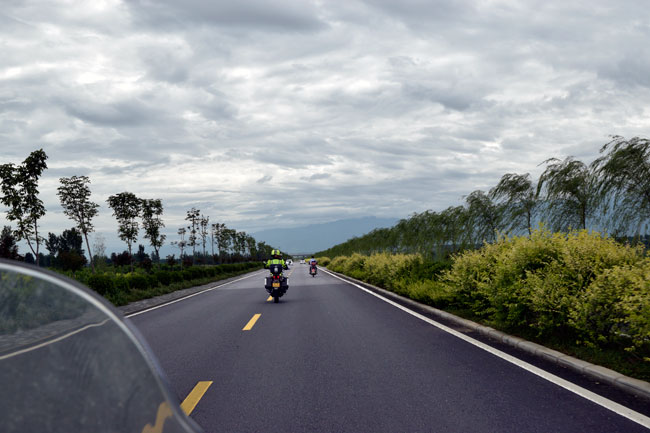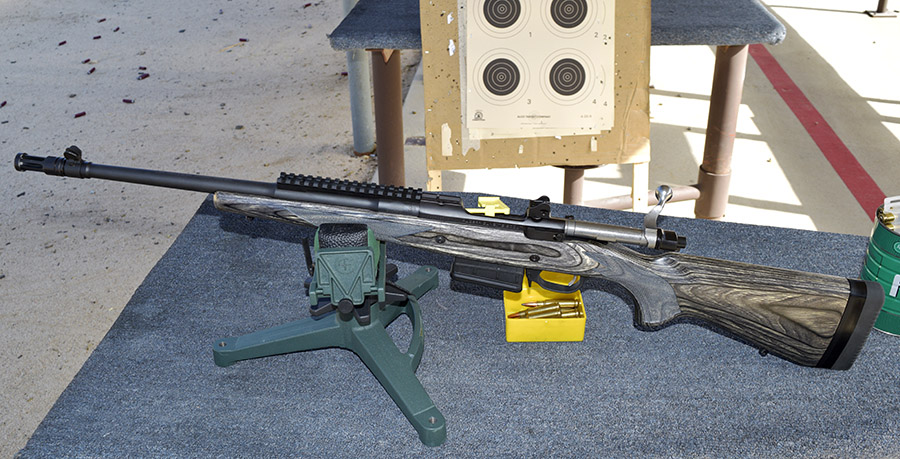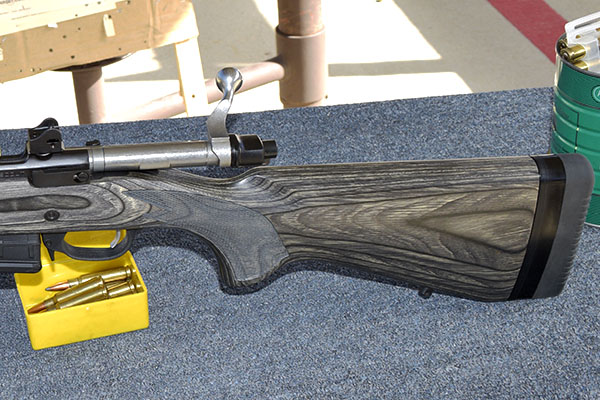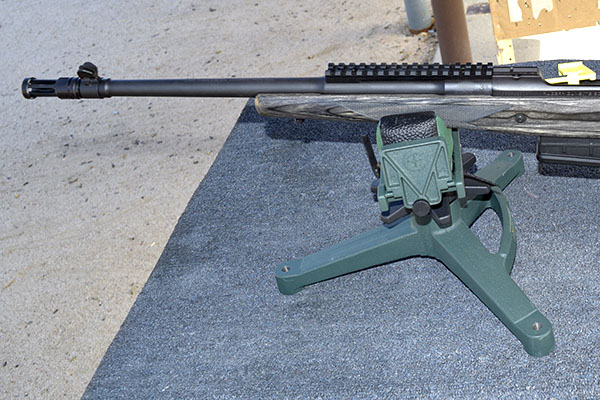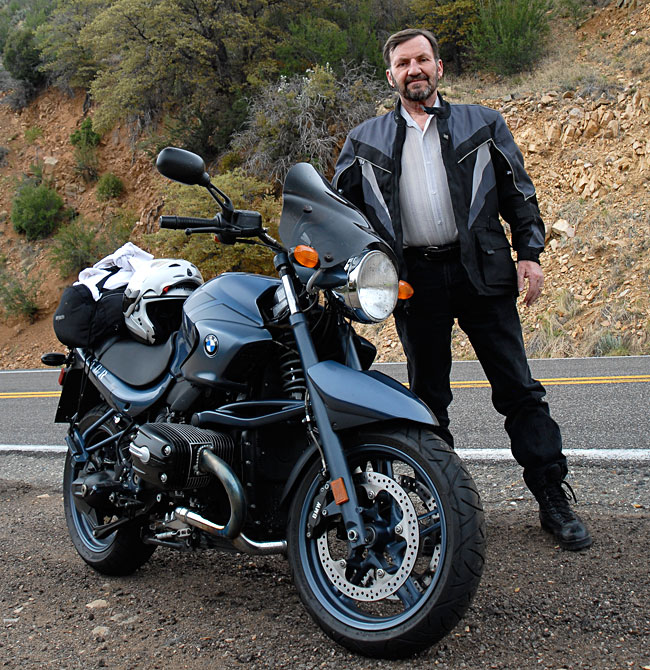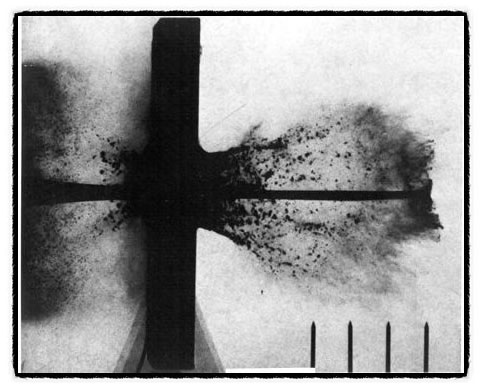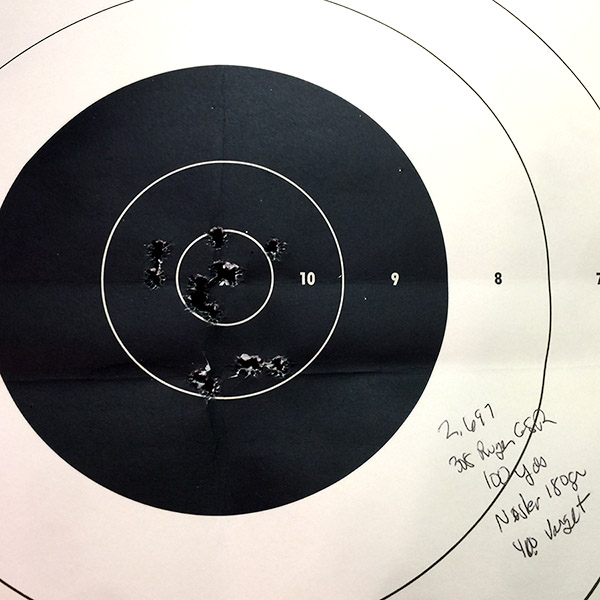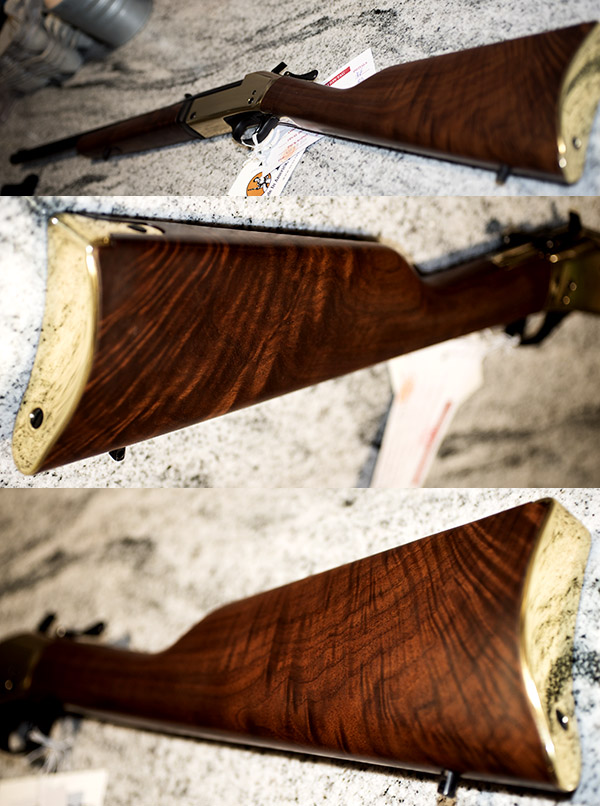
I’m using the time before I pick up my new Henry rifle to prepare the reloaded ammunition I want to test for accuracy. You will recall that in an earlier blog we discussed the three .45 70 load levels shown in modern reloading manuals. As I mentioned in that earlier blog, I use the loads intended for the 1873 Trapdoor Springfield. Those loads were powerful enough to take down all kinds of critters back in the 1800s, and in developing loads for other .45 70 rifles, I’ve found these to be fun to shoot and accurate.
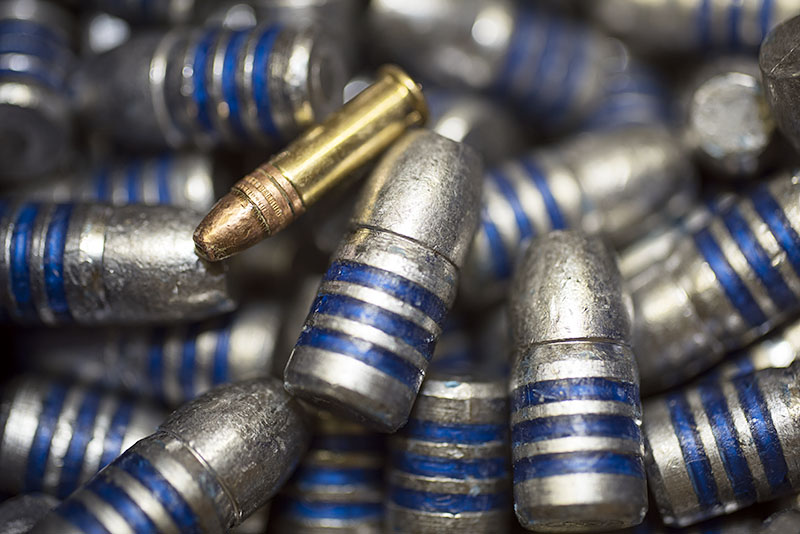
My loads are based primarily on the components I have on hand and loads I’ve known to work well in the past. Powders include SR 4759, IMR 4198, IMR 3031, 5744, Varget, and Trail Boss. Bullets include the Remington 405-grain jacketed soft point, the Hornady 300-grain jacketed hollow point, and the Missouri 405-grain cast roundnose.
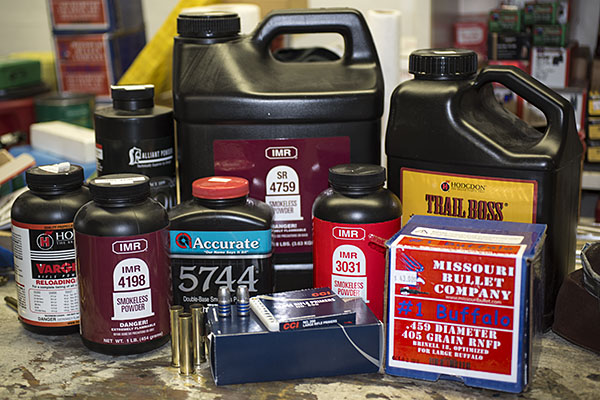
I like all of the bullets I listed above, but I particularly like the Missouri bullets. The Missouri cast bullets seem to always be available, they are relatively inexpensive, and they are accurate. I’m expecting to see great accuracy from these in the Henry, as they shoot well in the Ruger and the Marlin. The 405-grain Missouri bullets are accurate in the Chiappa 1886, too, but that rifle’s stock design and buttplate make the recoil painful when shooting the heavier Missouri bullets.
Here are the .45 70 loads I will test in the Henry:
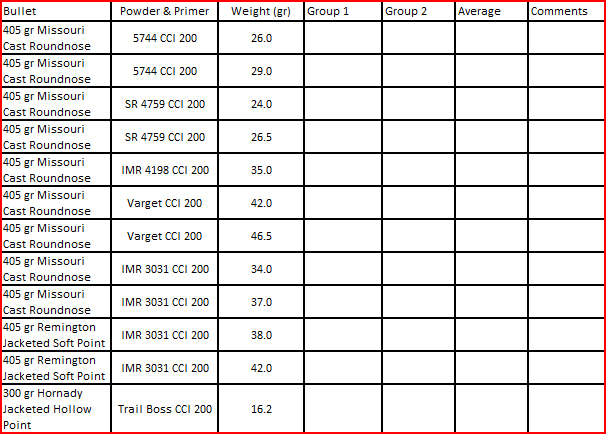
For a more in-depth reloading process overview, I invite you to review our earlier series on loading .45 ACP ammunition. The .45 70 reloading process is very similar to loading handgun ammo. That’s because the .45 70 is nearly a straight-walled cartridge, so the steps are the same. This is what is involved in reloading .45 70 ammo:
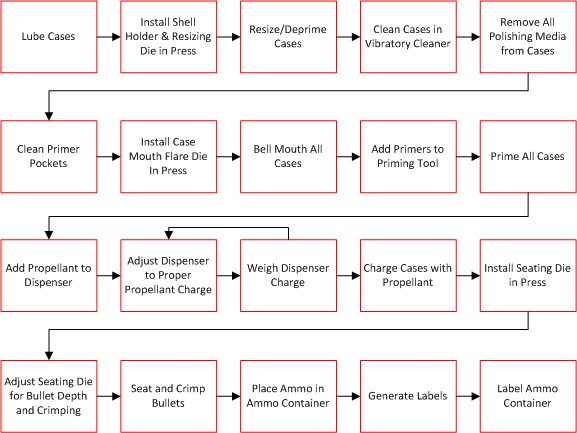
I use mostly RCBS or Lee reloading dies for all of the cartridges I load. Both are good companies, and both offer superior customer service (if you ever need it, which has only occurred a couple of times for me). I’ve been reloading .45 70 ammo for close to 50 years now, and I’ve been using the same set of RCBS dies the entire time.
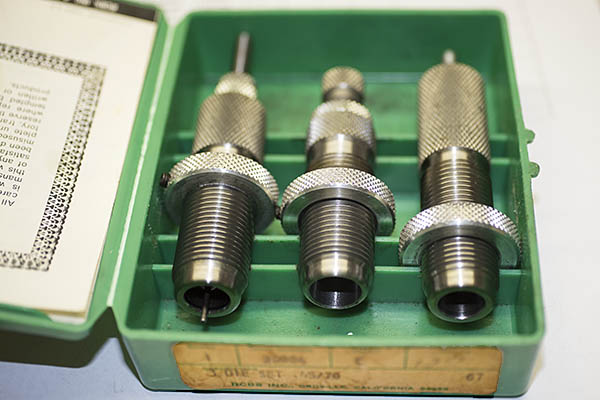
The expander die (the one in the center of the above three dies) is the one that flares the case mouth. It contains a threaded insert with a step in it to apply the bell mouth to the case.
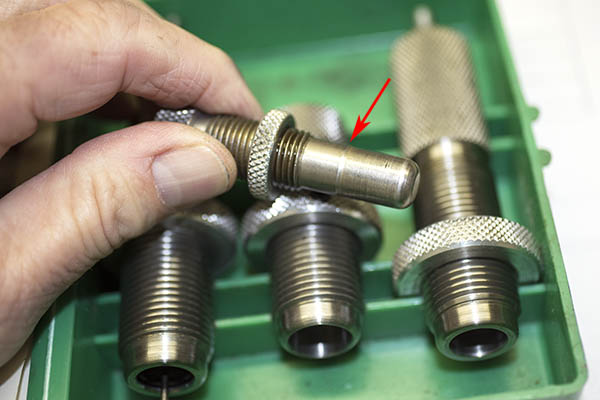
This is what the case mouth should look like after it has been flared. You don’t want to overdo this step. You just want to get enough of a flare to allow the bullet to get started in the case.
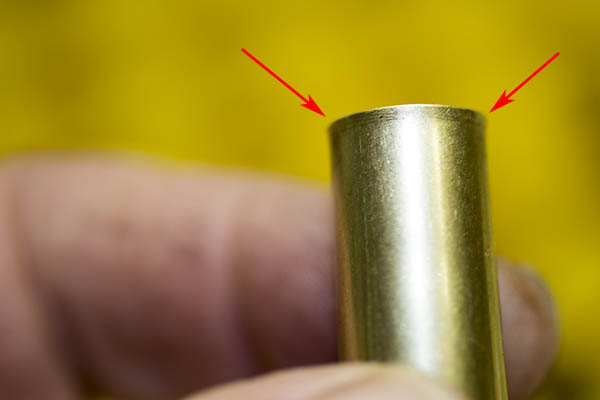
After the case has the flare applied, it’s time to clean the primer pockets and then prime each case. I use another RCBS tool to clean any combustion residue from the primer pocket (see our earlier tutorial on loading .45 ACP ammo), and then I use a Lee priming tool to seat the primers.
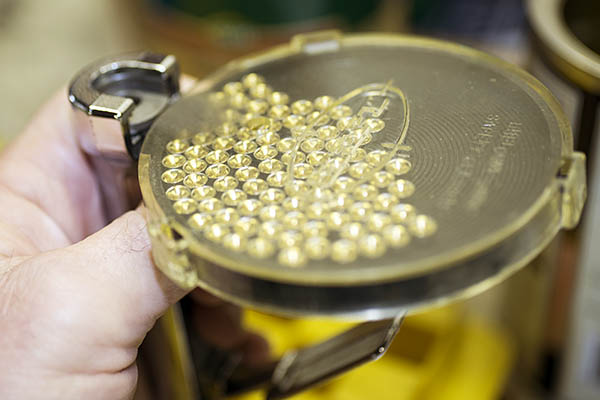
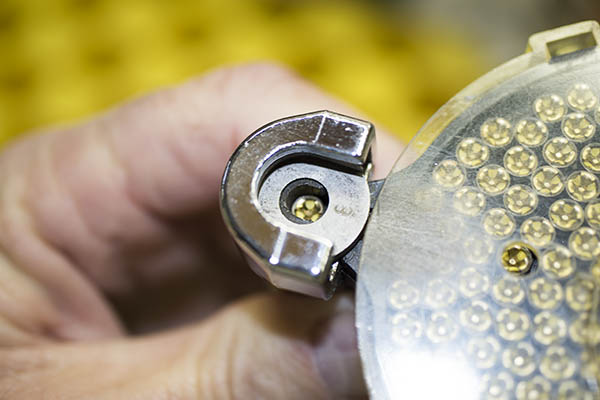
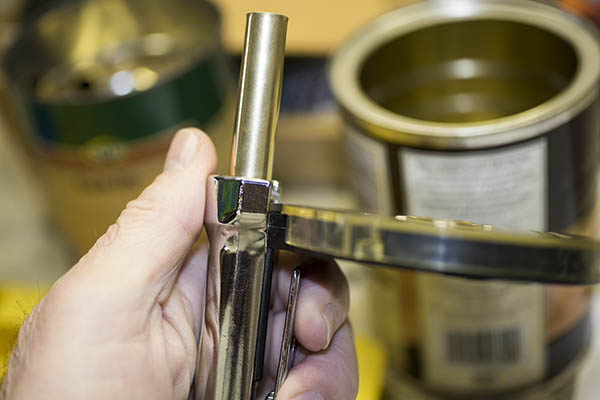
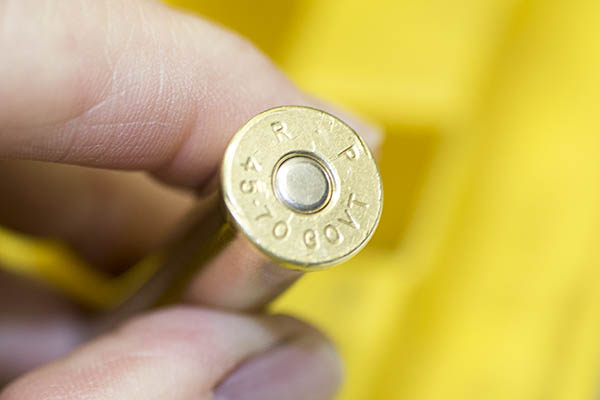
After all the cases have been cleaned, flared, and primed, it’s time to add propellant. I use my RCBS scale along with a powder dispenser to add the right amount of powder to each case. To get the correct amount of powder, I always consult a load manual. I’m showing you different charge weights in this blog, but DO NOT rely on what I’m telling you (or what you read on the Internet from other people) for this information. Always consult a reloading manual. Several reloading manuals are available; I prefer the Lyman manual and it’s the one I use most often. Most of the other manuals are either from bullet manufacturers or propellant manufacturers, so they list only their components. The Lyman manuals are not restricted to a single brand of bullets or powders, as Lyman does not manufacture bullets or powders. Lyman does a good job, I think.
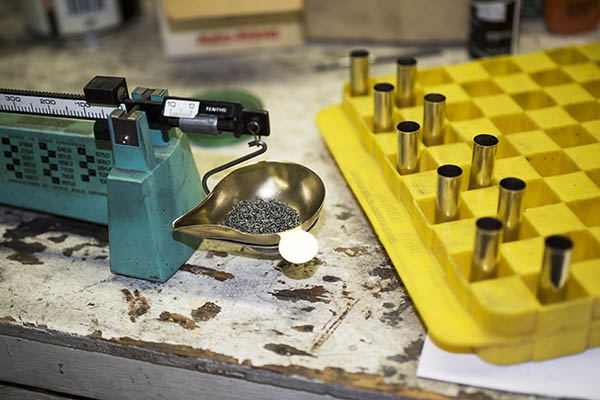
When I load different test loads as I’m describing in this blog, I’ll charge and complete each group separately. Typically, that’s ten cartridges in a group.
Once the cases have been charged with propellant, it’s time to seat and crimp the bullet. I typically use a light crimp for the .45 70. Crimping involves bending the flared case mouth into a crimping groove (sometimes called a cannelure) on the bullet. You crimp a cartridge for three reasons: To prevent the bullet from being forced further into the cartridge case if it is fed into the chamber automatically (as occurs with, say, a 9mm or .45 ACP cartridge), to prevent the bullet from backing out of the case due to the recoil of other cartridges (as might occur in a revolver or a rifle magazine), and to hold the bullet in place when the primer first fires (this allows the flame front to build to a consistent pressure in cartridge prior to driving the bullet down the bore). It’s that last reason that I’m most interested in here. It should make for a more accurate cartridge. Theoretically, neither of the first two reasons is a consideration for a single shot rifle.
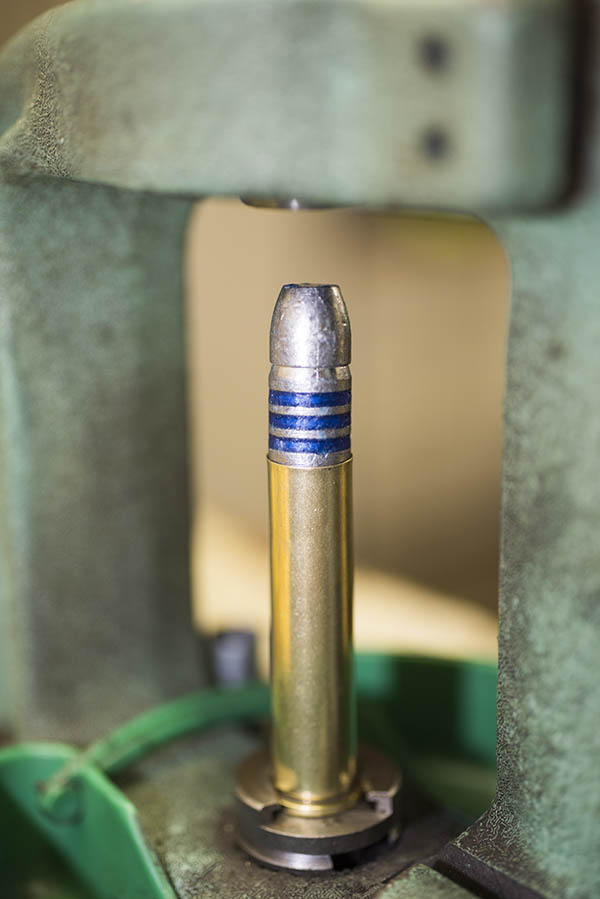
Seating the bullet and crimping it is a bit of a dance. You have to get the bullet seated to the right depth, and then you have to apply the crimp. We use the third and final die in a three-die set to accomplish both. I screw the bullet seating portion of the die fairly far into die initially and then I screw the die into the press to get the bullet seating depth where I want it. In this case, I want the top of the brass case to be nearly even with the top of the bullet’s crimp groove. Then I back the bullet seat all the way up in the die, and screw the die body into the press such that it forms the crimp (there’s a tapered decreased diameter in the die insider diameter that forms crimp). Once I have the crimp where I want it (and the amount of crimp I want), I then screw the bullet seater all the way such that it contacts the bullet. I then make sure everything is jake on the next round (you know, the same crimp and the same cartridge overall length), I make any required small adjustments, and then I lock everything down with the die’s two locknuts and load the remaining cases.
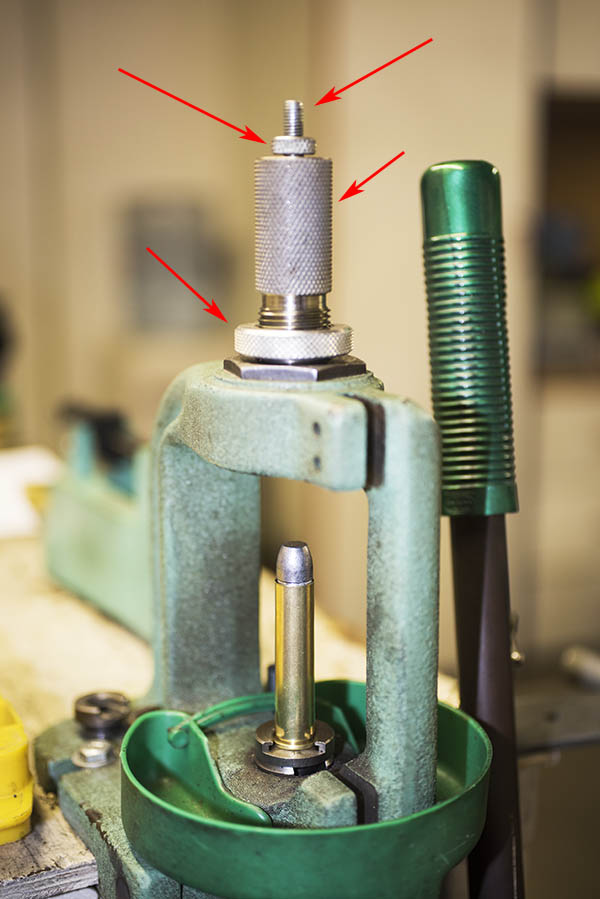
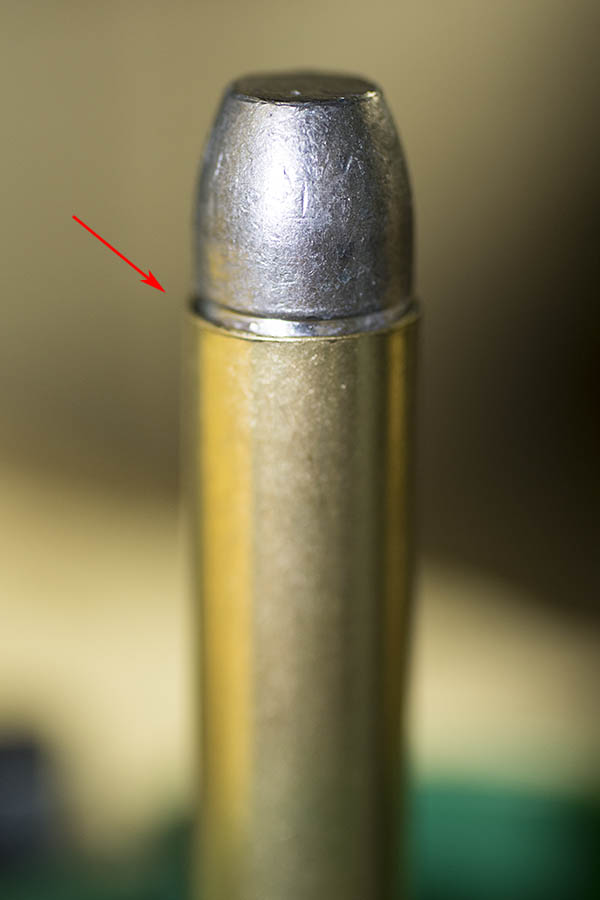
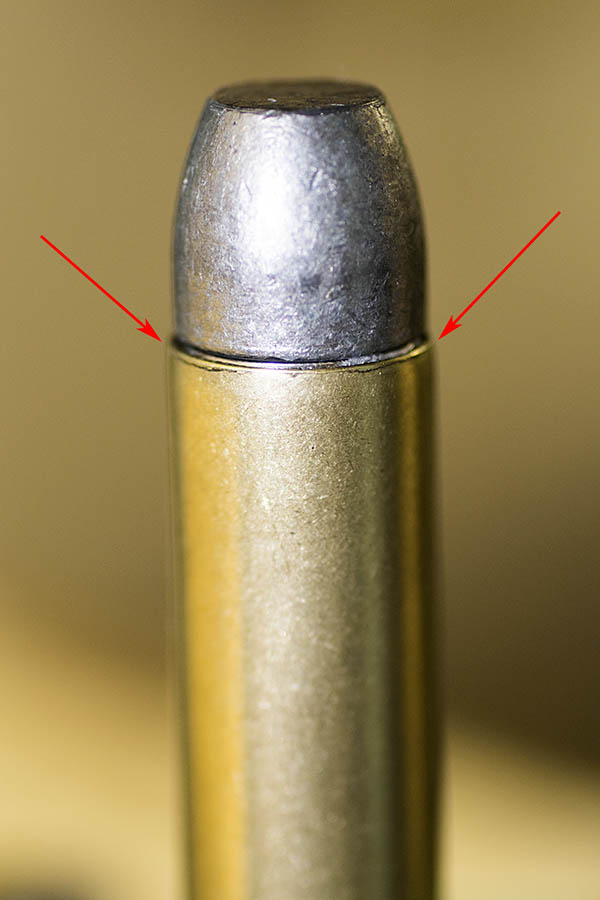
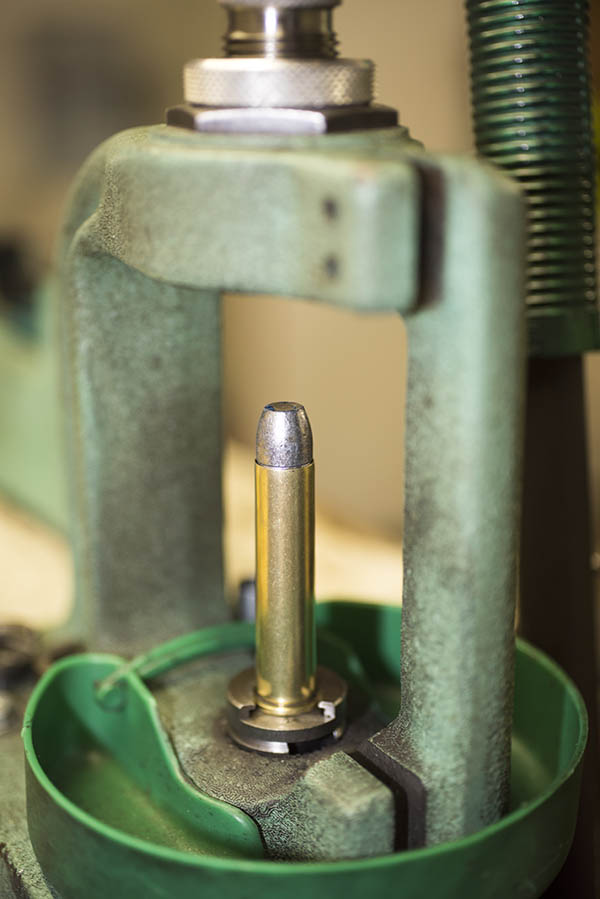
After I’ve done all of the above, I immediately label the packaged, reloaded ammo so that I know what I have. I can’t rely on my memory and do this later; I always perform the labeling operation as soon as the reloading operations are complete.
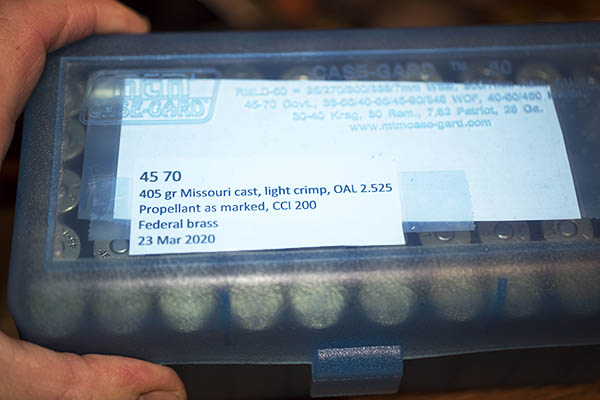
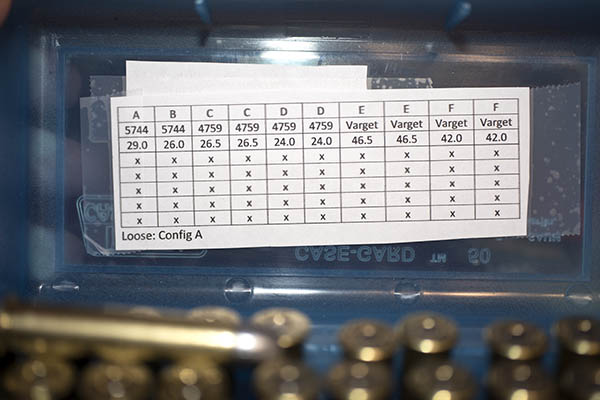
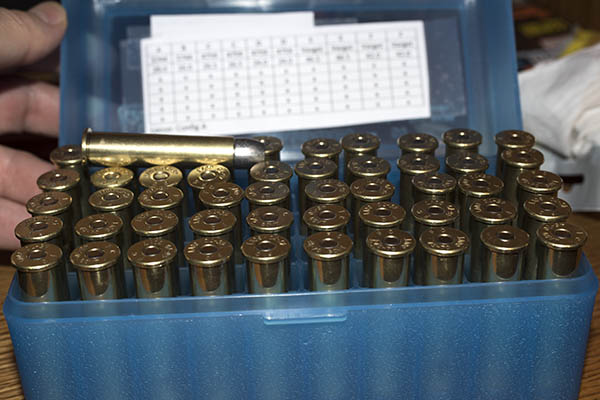
There you have it. I have all the .45 70 ammunition I want to test loaded, boxed, labeled, and ready to go to the range. Now all I have to do is take possession of my new Henry, head out to the West End Gun Club, and see what works best. You’ll get to see it, too, right here on the ExNotes blog.
Check out our earlier Henry Single Shot stories here:
Developing A Henry .45 70 Load: Part 1
The Henry Is In California
Henry Rifles: Made in America Or Not Made At All
And check out our other Tales of Gun Stories here.

